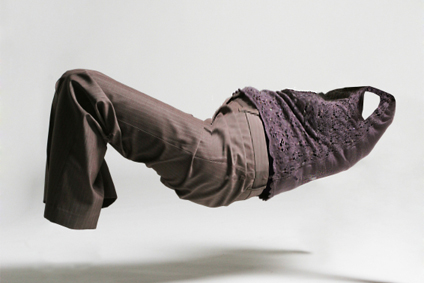The philosophy of natural mothering (natural childbirth, lactivism, attachment parenting) rests on fundamental assumptions that are often unrecognized and therefore unexamined. In the past I’ve written about the social construction of risk within our culture and the social imperative that everyone (mothers and doctors) do everything possible to minimize risks to babies without ever considering the trade-offs that reducing specific risks imply. But risk is not the only thing that is socially constructed within the philosophy of “natural” mothering. Women’s needs are also socially constructed. Specifically, in the philosophy of natural mothering, women’s needs are rendered invisible. Natural childbirth advocacy and its approach to the issue of pain in labor is perhaps the paradigmatic example of the way in which natural mothering erases the needs of women.
Natural childbirth advocacy uses several different strategies to render women’s needs invisible. To understand how these strategies work it makes sense to start with the empirical facts that most of us agree upon:
1. Childbirth is excruciatingly painful. Indeed the pain of childbirth is so impressive that ancient cultures imagined that the only possible explanation was divine punishment of women for their transgressions.
2. Severe pain should be treated. No one would ever suggests that cancer pain be ignored or that pain from a broken bone should go untreated.
3. Medical professionals have an obligation to treat pain. Every human being is entitled to the medical treatment of pain if that’s what he or she desires.
Natural childbirth advocates employ a variety of strategies to render invisible women’s need for pain relief. The first strategy is to insist that a mother’s need for pain relief is insignificant when compared to the “risks” of epidurals. This strategy is all the more remarkable when one considers that the “risks” of epidurals are not empirical, but purely speculative. Presumably, the baby has a need and a right, to avoid any potentially harmful effects from epidurals that might be discovered as some unspecified future time. And that need (even though theoretical) trumps the mother’s need for pain relief, despite the fact pain of this magnitude would always be treated if it were from any other source.
The intellectual sophistry of such a claim is all too apparent. The natural childbirth project involves invoking risks that may not even exist and inflating both the severity and the likelihood of such risks. And it rests on the assumption that no matter how theoretical or how small these risks may be, they automatically trump a woman’s need for pain relief. A woman’s need for pain relief is therefore of no consequence and not even worthy of consideration.
Even when natural childbirth advocates concede that women might feel a need for pain relief, they employ a variety of strategies to diminish the importance of that need. These strategies involve
Blaming the woman for her own pain – if she did it “right,” childbirth would not be painful.
Blaming the woman for not using “natural” methods of pain relief – regardless of their questionable value in providing adequate relief.
Blaming the woman for not embracing the pain as an “empowering” aspect of her biological destiny.
Simply put, according to natural childbirth dogma, a woman’s pain in labor is irrelevant of no importance compared to the baby’s need to avoid theoretical risks, and, in any case, is her own fault.
It is important to note that in natural childbirth philosophy, it makes no difference how small the risk to the baby might be, and it makes no difference how large the mother’s need for pain relief might be. To put that in perspective, it helps to consider another, far more trivial, example of balancing risk and need that all mothers must address.
Consider the issue of driving with a baby in the car. There is no doubt that riding in a car exposes a baby to a real risk of injury and death in a car crash, a risk whose magnitude is far greater than the theoretical risk of an epidural. And consider that the mother’s “need” to go to the grocery store is trivial, and can easily be met at another time without putting the baby in danger of injury or death in a car accident. So why aren’t natural childbirth advocates berating women for driving with infants in their cars? They consider that larger risk socially acceptable. In that case, convenience trumps whatever needs the baby might have.
The reality is that every choice has risks and benefits, and those risks and benefits must weighed against each other. But when a woman’s need for pain relief is rendered invisible, natural childbirth advocates can act as if there is no benefit to pain relief in labor and can pretend that no weighing of risks and benefits is necessary.
It is difficult to imagine any other situation in which ignoring a woman’s severe pain would be socially and ethically acceptable. But for natural childbirth advocates, a woman’s needs are invisible, and therefore merit no consideration.
This piece first appeared in January 2011.


